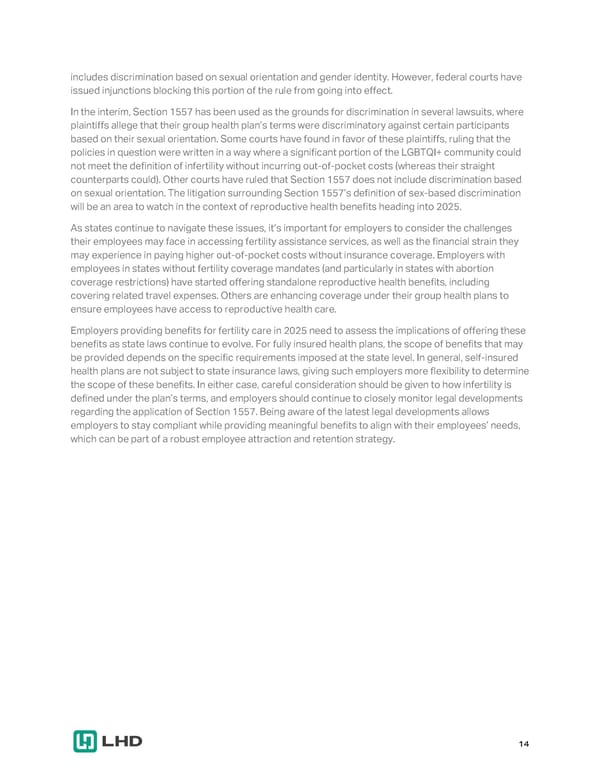includes discrimination based on sexual orientation and gender identity. However, federal courts have issued injunctions blocking this portion of the rule from going into effect. In the interim, Section 1557 has been used as the grounds for discrimination in several lawsuits, where plaintiffs allege that their group health plan’s terms were discriminatory against certain participants based on their sexual orientation. Some courts have found in favor of these plaintiffs, ruling that the policies in question were written in a way where a significant portion of the LGBTQI+ community could not meet the definition of infertility without incurring out-of-pocket costs (whereas their straight counterparts could). Other courts have ruled that Section 1557 does not include discrimination based on sexual orientation. The litigation surrounding Section 1557’s definition of sex-based discrimination will be an area to watch in the context of reproductive health benefits heading into 2025. As states continue to navigate these issues, it’s important for employers to consider the challenges their employees may face in accessing fertility assistance services, as well as the financial strain they may experience in paying higher out-of-pocket costs without insurance coverage. Employers with employees in states without fertility coverage mandates (and particularly in states with abortion coverage restrictions) have started offering standalone reproductive health benefits, including covering related travel expenses. Others are enhancing coverage under their group health plans to ensure employees have access to reproductive health care. Employers providing benefits for fertility care in 2025 need to assess the implications of offering these benefits as state laws continue to evolve. For fully insured health plans, the scope of benefits that may be provided depends on the specific requirements imposed at the state level. In general, self-insured health plans are not subject to state insurance laws, giving such employers more flexibility to determine the scope of these benefits. In either case, careful consideration should be given to how infertility is defined under the plan’s terms, and employers should continue to closely monitor legal developments regarding the application of Section 1557. Being aware of the latest legal developments allows employers to stay compliant while providing meaningful benefits to align with their employees’ needs, which can be part of a robust employee attraction and retention strategy. 14
 2025 Employee Benefits Market Outlook Page 13 Page 15
2025 Employee Benefits Market Outlook Page 13 Page 15